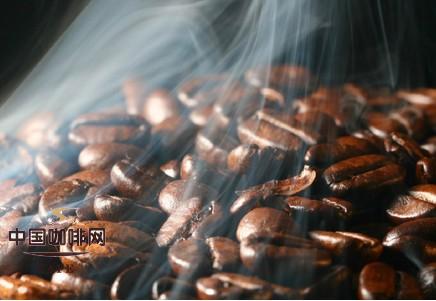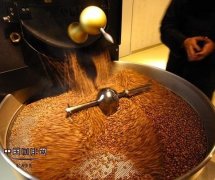Coffee roasting principle Fine Coffee basic knowledge of Coffee

To do a good job of baking, every production link can not be ignored, the selection of materials should be exquisite, the weighing of materials should be accurate, and the operation should be careful.
Baking is a science. To understand how baking works, you must first understand heat conduction, convection, and radiation.
Conduction is when heat is conducted from a heat source, causing the surrounding molecules to vibrate and emit heat, gradually moving from a high temperature to a low temperature. The conduction of stainless steel has uneven heating, which easily leads to colder parts of the pot and hotter parts.
Convection means that when a substance is heated, the fluid substance or gas rises due to volume expansion and density reduction due to heat, and its position is supplemented by the exchange of cooler and denser fluids around it, and then heated up again, and the surrounding substances are supplemented. Such circular heating motion is convection.
Radiation does not require any medium, and heat can be radiated directly to the object to heat it. The most common radiation methods used for food are the use of dielectric, microwave or infrared radiation. In the baking operation, depending on the environmental conditions at that time, two or three ways are used to bake at the same time.
Common problems encountered during the coffee roasting phase include the following:
1. The preheating temperature of the oven is insufficient, and the coffee beans are immediately put into the oven, which makes the roasting time prolonged. As a result, roasting losses are large and coffee beans are light in color, which is due to insufficient heat, the skin cannot be fully charred, resulting in a lack of color, and the internal tissue is rough.
Second, the oven temperature is too high, the surface of the coffee is formed too early when roasting, so that the internal tissue expansion is suppressed, and because of its rapid surface coloring, the operator mistakenly believes that the product has been roasted and the roasting is completed ahead of time. The bean's interior is sticky and dense, and it doesn't swell as much as it should, and it doesn't have the normal flavor.
Third, the neutral is too long after preheating. Too much heat is accumulated in the inner furnace for too long. As soon as the coffee beans enter the furnace, all the heat sources will concentrate on the surface of the beans at the initial stage of the roasting process, forming too strong a fire, and then the heat will disappear and the temperature will drop rapidly. The unstable temperature in the furnace will cause the coffee beans to be difficult to ripen.
4. Baking time is too much or too little. The baking temperature and the length of time should be adjusted according to the number of beans. A small number of baking bins have more space, and the heat of metal conduction heat radiation is large, so the temperature is lower; and when the number is large, the temperature can be higher. The length of baking time also needs to be flexibly adjusted. Most beans into the furnace heating nothing more than by the appearance and around the absorption of heat transmitted to the center of the beans, so you can observe the appearance of beans to change its baking situation.
In addition, different types and performances of baking machines will also cause differences in baking time and temperature. From the former direct fire gas type up and down fire mode to the electric heat type commonly used now, the convection design of energy is constantly improved. At the same time, the fan can improve the stability of heat convection, so that the color of baked beans is more uniform, and it can also save electricity and baking time.
Advanced tools and equipment make the baking process easier to operate, and it is equally important for operators to accumulate baking experience.
In short, coffee roasting will face a variety of problems, only familiar with the roasting principle of coffee, continuous accumulation of experience, coupled with improvisation, barista can master exquisite skills.
Important Notice :
前街咖啡 FrontStreet Coffee has moved to new addredd:
FrontStreet Coffee Address: 315,Donghua East Road,GuangZhou
Tel:020 38364473
- Prev

Coffee roasting skills knowledge of high-quality coffee bean roasting
When is dehydration? How many degrees does it take to climb? Smoke exhaust problem? What is the taxiing action? These professional knowledge about coffee roasting must be the skills that many coffee roasters want to know, so here is a little experience for coffee lovers: however, it is only a simple introduction. For details, please refer to coffee roasting and other related books or interested coffee lovers.
- Next

Definition of basic roasting degree and taste of boutique coffee
In the United States, the baking degree has long been defined by Cinnamon (shallow roasting), City (shallow roasting), Fully City (deep roasting) and Dark roast (heavy deep roasting, including Italian and French). However, the American preference for coffee flavor has always been strong in the west and light in the east, so the shallow roasting on the west coast may be as deep as that on the east coast, and vice versa.
Related
- Beginners will see the "Coffee pull flower" guide!
- What is the difference between ice blog purified milk and ordinary milk coffee?
- Why is the Philippines the largest producer of crops in Liberia?
- For coffee extraction, should the fine powder be retained?
- How does extracted espresso fill pressed powder? How much strength does it take to press the powder?
- How to make jasmine cold extract coffee? Is the jasmine + latte good?
- Will this little toy really make the coffee taste better? How does Lily Drip affect coffee extraction?
- Will the action of slapping the filter cup also affect coffee extraction?
- What's the difference between powder-to-water ratio and powder-to-liquid ratio?
- What is the Ethiopian local species? What does it have to do with Heirloom native species?

